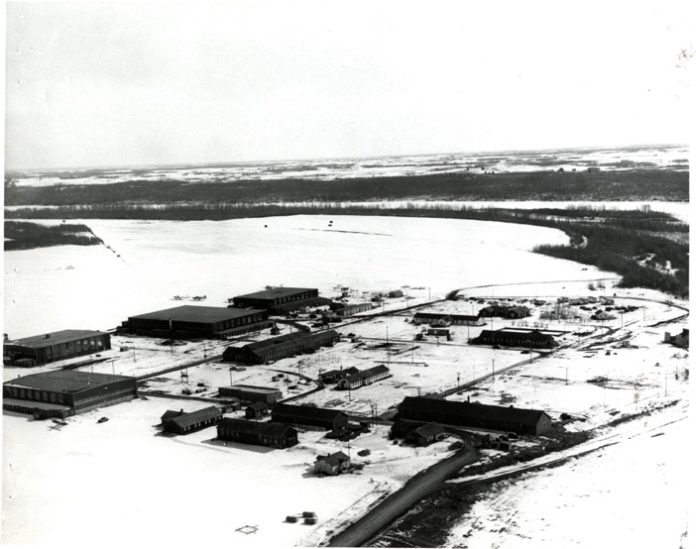
The hangar that burned down in a Sunday night fire was the last physical remnant of the city’s contributions to the war effort during the Second World War.
It was also one of the last remaining hangars from that era in Saskatchewan.
According to a volunteer with the Prince Albert Historical Society, the hangar began as a small building built around 1928 or 1929.
When the Second World War started, M and C Aviations, the company assembling and servicing Tiger Moths, began using the facility.
It was expanded, with the most recent size added to it in the late 1930s. Three or four similar hangars were built after the start the war.
During the war, the British Government used Canada as its training ground for commonwealth pilots. Towns, villages and cities across the country had air bases, whether full bases or relief landing strips for student pilots to use.
Several bases were built on the prairies, later becoming the sites of municipal and international airports.
The bases built in Moose Jaw, Prince Albert, North Battleford, Saskatoon, Regina and Swift Current are among the original Second World War-era bases converted into modern airports and still in use today.
Each of the major airbases had a different role in training pilots for the war. According to Vintage Wings of Canada, Prince Albert was used as an elementary flying training school, where future pilots got their first chances to go up into the sky.
That training lasted over eight weeks, as pilots needed to rack up 50 hours of basic flying on planes such as the De Havilland Tiger Moth, the Fleet Finch or the Fairchild Cornell. In Prince Albert, trainees flew the Tiger Moth.
The site was also used as an air observer school, where future navigators were trained.
According to the airport’s website, the air observer school closed on November 15, 1944, and the airport was expanded to its current size in 1955. The website says that the hangar was all that remained of the former elementary flying training school. A plaque honouring those who died in training accidents still stands in front of the terminal building.
Post-war, the hangar was used by a handful of private companies, including Norcan and Athabaska. Athabaska later became Transwest, which was the owner of the building when it burned.
While it was owned by Athabaska, the hangar was home to planes flown by Floyd Glass, a pilot who learned to fly in the 1930s and then served as a military flying training instructor during the war.
Glass died inn 2000. The airport is now called Glass Field in his honour.
“It’s sad to see a part of our history go,” Historical Society volunteer Ken Guedo said of the fire.
“This was the last building standing from the World War Two-era, when the airport was part of the British Commonwealth Air Training Plan. That’s the last physical link to it.”
Other remains of the plan can be seen across the province.
Runways were arranged in triangular patterns, and abandoned airfields can be spotted by satellite image in many communities. The original triangle airfield design can still be seen in both the Regina and Saskatoon airport layouts. Many of the hangars are long gone, though some are still used to store agricultural equipment. Others have been converted into hockey rinks and event centres.
Caronport, Sask., a village about 20 minutes west of Moose Jaw and home to Briercrest College, has several buildings from the era still intact. Most have been converted into buildings used by the school.

